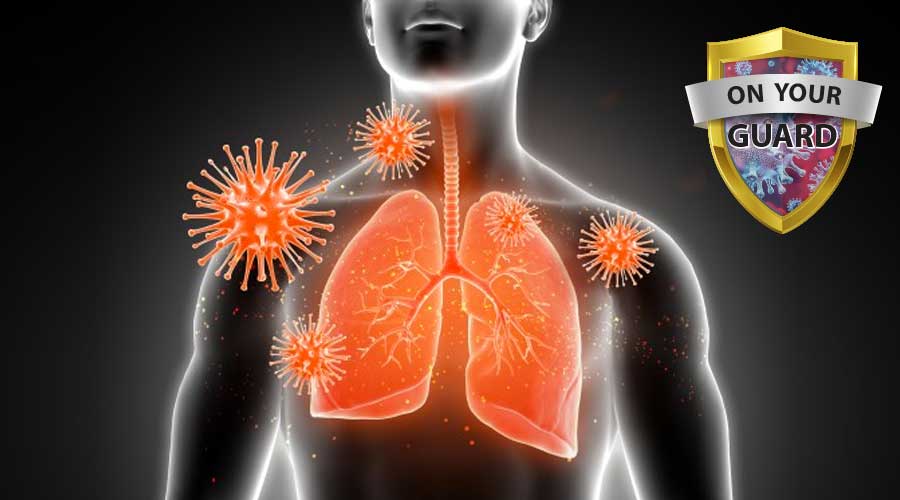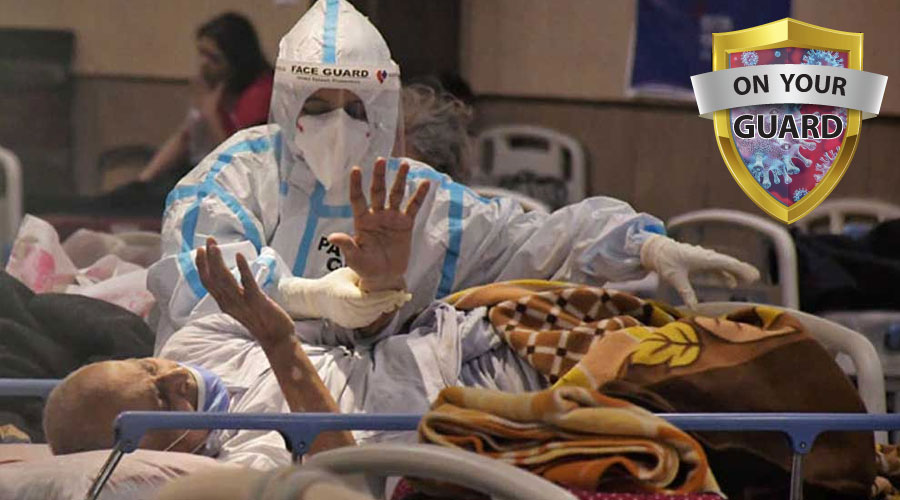A Covid survivor’s lungs can recover, but not overnight. “Recovery takes time,” explains Panagis Galiatsatos, an expert on lung disease at Johns Hopkins Bayview Medical Center.
But before looking at recovery timelines, it is important to understand what kind of damage Covid-19 can inflict on the lungs. Complications can be in the form of pneumonia, and in most severe cases, acute respiratory distress syndrome, or ARDS. Sepsis is another possible complication and can lead to lasting harm to the lungs and other organs.
In pneumonia, the lungs become filled with fluid and inflamed, leading to breathing difficulties. In Covid patients, the pneumonia tends to take hold in both lungs. Air sacs in the lungs fill with fluid, limiting their ability to take in oxygen and causing shortness of breath, cough and other symptoms. While most people recover from pneumonia without any lasting lung damage, the pneumonia associated with Covid-19 can be severe. Even after the disease has passed, lung injury may result in breathing difficulties that might take months to improve.
A steady progression of Covid-19 pneumonia can eventually cause shortness of breath, and can lead to acute respiratory distress syndrome (ARDS), a form of lung failure. Patients with ARDS are often unable to breath on their own and may require ventilator support to help circulate oxygen in the body.
Whether it occurs at home or at the hospital, ARDS can be fatal. People who survive ARDS and recover from Covid-19 may have lasting pulmonary scarring.
Another possible complication of a severe case of Covid-19 is sepsis which occurs when an infection reaches, and spreads through, the bloodstream, causing tissue damage everywhere it goes. “Lungs, heart and other body systems work together like instruments in an orchestra,” Galiatsatos says. “In sepsis, the cooperation between the organs falls apart. Entire organ systems can start to shut down, one after another, including the lungs and heart.”
Sepsis, even when survived, can leave a patient with lasting damage to the lungs and other organs.
Dr Rommel Tickoo, Associate Director, Internal Medicine, Max Healthcare, says that it is somewhere around the second week of being infected with Covid-19, that the virus may spread to the lungs. “If you have consistent fever, above 100 for 48 to 72 hours, and if you have inflammatory markers in your blood, most importantly high C-reactive protein (CRP) levels (above 10), and dipping oxygen saturation (less than 94), these are signs that may signal that infection has spread to the lungs,” he says.
Physicians have noted that when a person has Covid-19, the immune system is working hard to fight the invader. This can leave the body more vulnerable to infection with another bacterium or virus on top of the Covid-19 — a superinfection. More infection can result in additional lung damage.
There are three factors that determine the lung damage risk in Covid-19 cases and how likely a patient can recover and regain lung function. One, disease severity; two, comorbidities; and three, treatment. “Existing health problems, such as chronic obstructive pulmonary disease (COPD) or heart disease that can raise the risk for severe disease,” explains Galiatsatos, adding that ultimately, a patient’s recovery and long-term lung health would depend on what kind of care he/she gets and how quickly.
To come back to our initial question on recovery, the answer is that it will take time. Hence doctors advise patients to gradually ease into a normal routine. Doctors agree that to begin with, it is vital to accept your current state while planning and implementing changes. In terms of pandemic-driven changes, this involves three steps: Taking note of the current reality, making realistic measurable goals in consultation with the treating physician, and then creating a plan to achieve these goals.
Galiatsatos says it is important to understand and accept that there’s the initial injury to the lungs, followed by scarring. “Over time, the tissue heals, but it can take three months to a year or more for a person’s lung function to return to pre-Covid-19 levels,” he says, noting that lung healing in itself can produce symptoms.
“It is similar to a leg bone breaking, needing a cast for months, and having the cast come off. No one would expect to begin to run right away with the newly-healed leg bone. As the leg strengthens and muscle re-grows, patients will experience discomfort from this healing. This is what our lungs go through, too!”
PS: This column (source: Union ministry of health, WHO, CDC) is for general information. For specific concerns, especially for those with comorbidities, it is advisable to consult your family physician.












